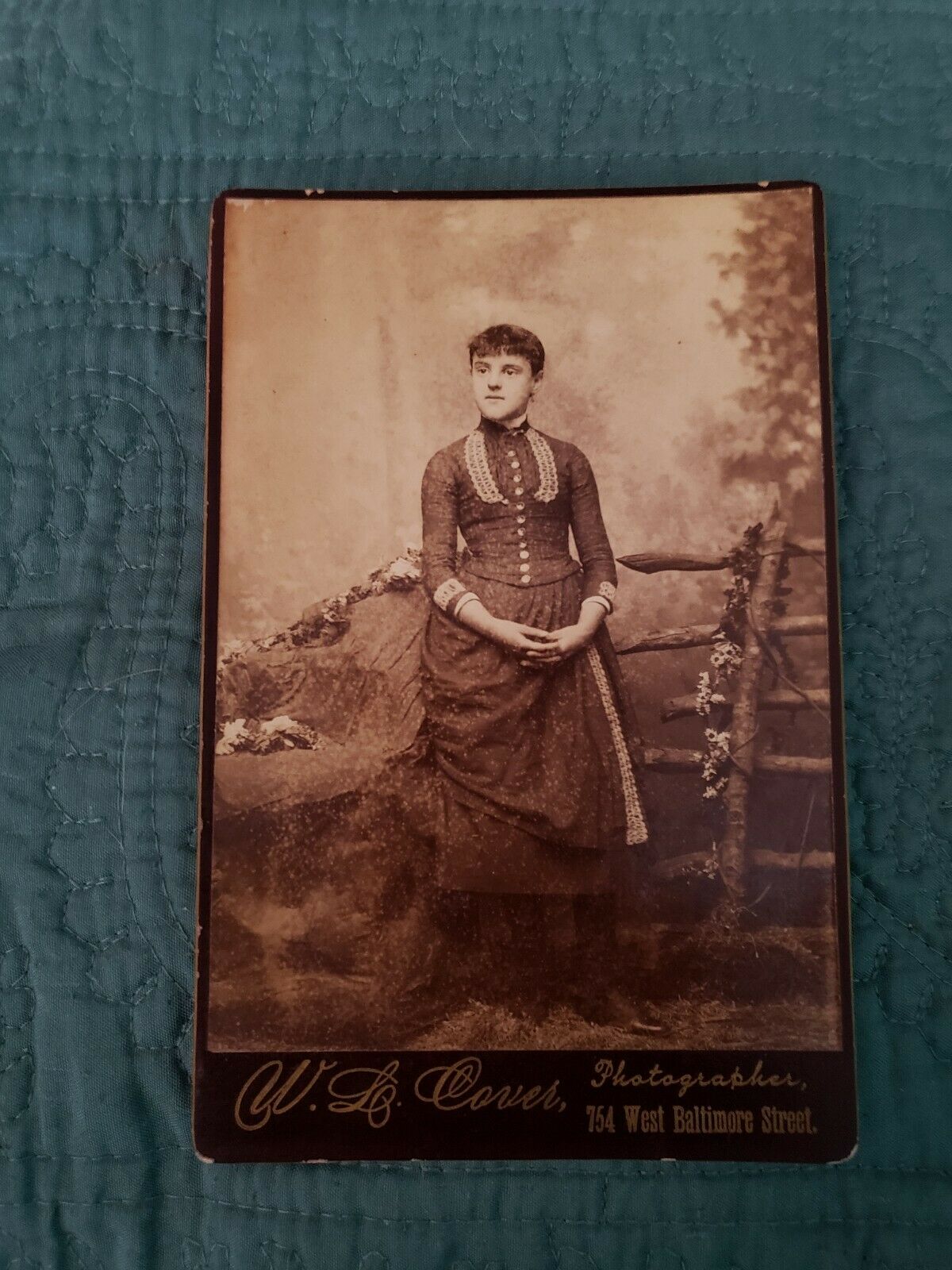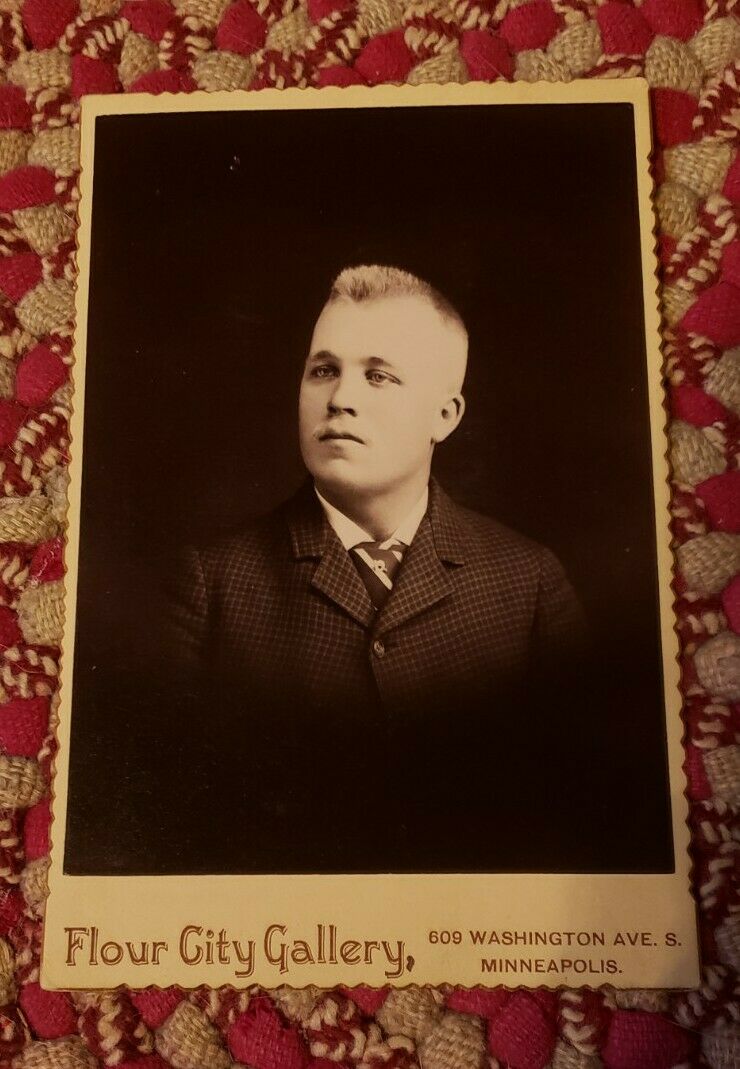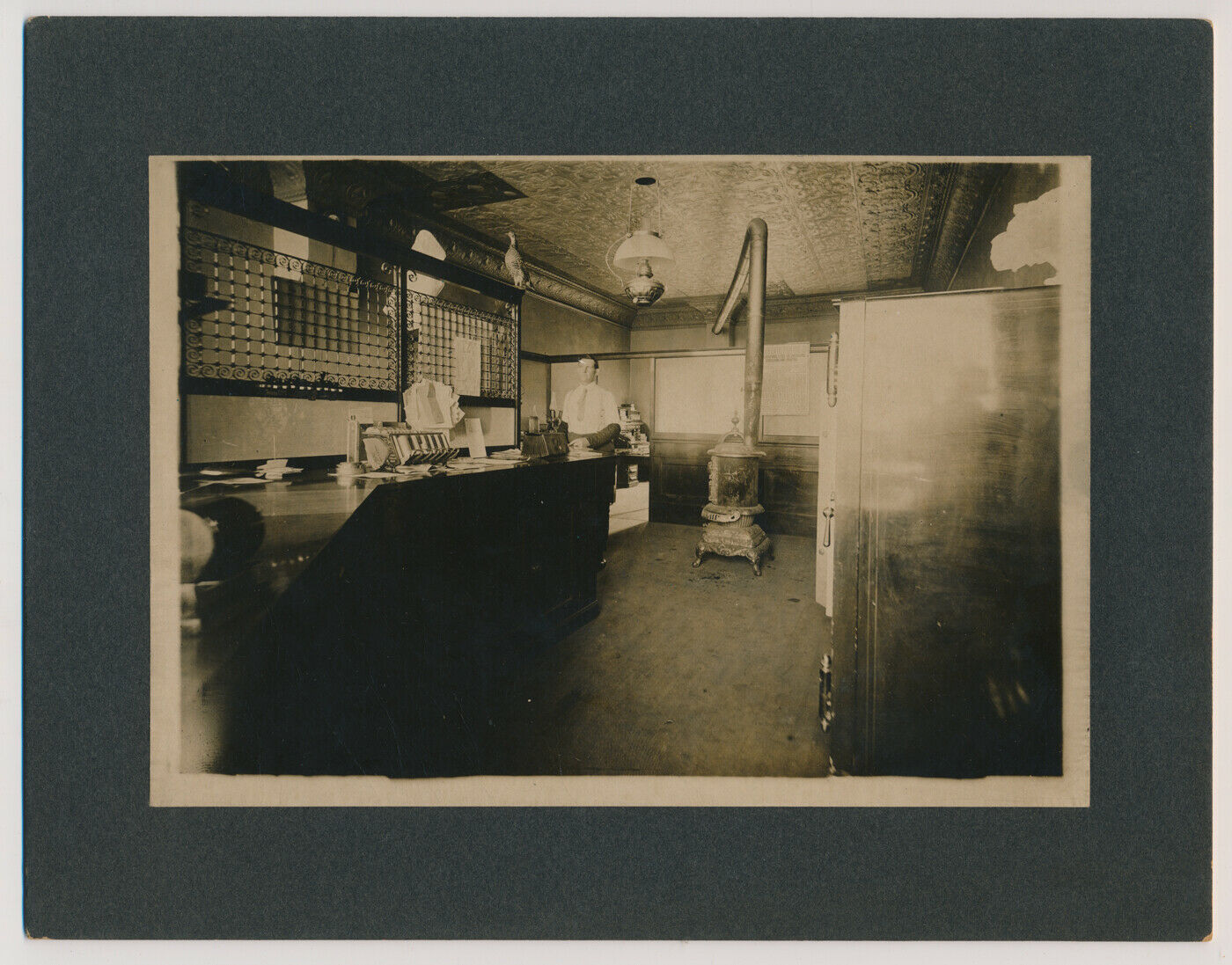-40%
rare cabinet photo old west New Mexico Indian pueblo ruin cowboy Penitentes cult
$ 132
- Description
- Size Guide
Description
Rare Vintage 1890s historic image of Indian pueblo ruin somewhere in New Mexico with cowboy / tourist / or photographers assistant posing out front. Note the conservation with large crosses used by the Penitentes cult followers. More on Pueblos and the Penitentes cult below:(The Penitent Brothers), a society of flagellants existing among the Spanish of New Mexico and Colorado.
Practices
The Hermanos Penitentes are a society of individuals, who, to atone for their sins, practise penances which consist principally of flagellation, carrying heavy crosses, binding the body to a cross, and tying the limbs to hinder the circulation of the blood. These practices have prevailed in Colorado and New Mexico since the beginning of the nineteenth century. Up to the year 1890, they were public; at present they are secret, though not strictly. The Hermanos Penitentes are men; in the latter half of the nineteenth century they admitted women and children into separate organizations, which, however, were never numerous. The society had no general organization or supreme authority. Each fraternity is local and independent with its own officers. The chief officer, hermano mayor (elder brother), has absolute authority, and as a rule holds office during life. The other officers are the like as those of most secret societies: chaplain, sergeant-at-arms, etc. The ceremony of the initiation, which takes place during Holy Week, is simple, excepting the final test. The candidate is escorted to the morada (abode), the home, or council house, by two or more Penitentes where, after a series of questions and answers consisting in the main of prayer he is admitted. He then undergoes various humiliations. First, he washes the feet of all present, kneeling before each; then he recites a long prayer, asking pardon for any offence he may have given. If any one present has been offended by the candidate, he lashes the offender on the bare back. Then comes the last and crucial test: four or six incisions, in the shape of a cross, are made just below the shoulders of the candidate with a piece of flint.
Flagellation, formerly practised in the streets and in the churches, is now, since the American occupation, confined generally to the morada and performed with a short whip (disciplina), made from the leaf of the amole weed. Fifty years ago the Hermanos Penitentes would issue from their morada (in some places as Taos, N.M., three hundred strong), stripped to the waist and scourging themselves, led by the acompanadores (escorts), and preceded by a few Penitentes dragging heavy crosses (maderos); the procession was accompanied by a throng, singing Christian hymns. A wooden wagon (el carro de la muerte) bore a figure representing death and pointing forward an arrow with stretched bow. This procession went through the streets to the church, where the Penitentes prayed, continued their scourgings, returned in procession to the morada. Other modes of self-castigation were often resorted to; on Good Friday it was the custom to bind one of the brethren to a cross, as in a crucifixion. At present no "crucifixions" take place, though previous to 1896 they were annual in many places in New Mexico and Colorado. The Penitentes now confine themselves to secret flagellation and occasional visits to churches at night. Flagellation is also practised at the death of a Penitente or of a relative. The corpse is taken to the morada and kept there for a few hours; flagellation takes place at the morada and during the procession to and from the same.
Origin and history
Flagellation was introduced into Latin America during the sixteenth and seventeenth centuries, though no actual records are found of any organized flagellant societies there until comparatively recent times. In some localities of Mexico, Central, and South America, flagellant organizations, more or less public in their practices, existed until very recently, and still exist in a few isolated places. All these later organizations were regulated and controlled by Leo XIII. The origin of the New Mexican flagellants or hermanos penitentes is uncertain, but they seem to have been an outgrowth of the Third Order of St. Francis, introduced by Franciscans in the seventeenth century. Their practices consisted principally in flagellation, without incisions and with no loss of blood, carrying small crosses, and marching in processions with bare feet to visit the churches and join in long prayers. The barbarous customs of the New Mexico Penitents are of a much later origin. The New Mexican flagellants call their society, "Los hermanos penitentes de la tercer orden de San Francisco," and we know that when the last organization came into prominence in the early part of the nineteenth century, the older organization no longer existed in New Mexico. When their practices reached their worst stage (about 1850-90), the attention of the Church was directed towards them. The society was then very strong among all classes and the ecclesiastical authorities decided to use leniency. In a circular letter to the Penitentes of New Mexico and Colorado in 1886, Archbishop Salpointe of Santa Fe ordered them in the name of the Church to abolish flagellation, and the carrying of the heavy crosses, and sent to the different hermanos mayores copies of the rules of the Third Order of St. Francis, advising them to reorganize in accordance therewith. His letter and orders were unheeded. He then ordered all the parish priests to see the Penitentes personally and induce them to follow his instructions, but they accomplished nothing. To make matters worse, a Protestant paper, "La hermandad", was published at Pueblo, Colorado, in 1889, which incited the Penitents to resist the Church and follow their own practices. Archbishop Salpointe, in a circular letter of 1889, then ordered the Penitentes to disband. As a result the society, though not abolished, was very much weakened, and its further growth prevented. In Taos, Carmel, San Mateo, and a few other places they are still numerous and continue their barbarous practices, though more secretly. - New Advent
Penitentes and the Legend of Smith’s Grave
June 18, 2014
A Penitente Morada
A Penitente Morada
At the base of Hermit’s Peak, near the trailheads branching off to Beaver Creek and to Hermit’s Peak, there is the grave of a humble man, well-loved and never forgotten; gone now at least half a century, known to us only as “Mr. Smith.” Growing up in the area with summer hikes in the mountains, passing Smith’s Grave near the beginning of the Skyline Trail, stopping respectfully was always part of the hike. When people were with us that didn’t know the legend, we always told it once again and kept the memory of Mr. Smith alive. Sometimes, a rebellious camper would want to step on the grave or even to spit on it. We told them that the grave was guarded by his friends, the Penitentes, who would not allow any desecration and would teach a lesson to any who dared to show disrespect.
From time to time, a naughty camper would touch the grave. Later that night, some of our camp counselors would ride into camp in a group on horseback and, as arranged in advance with the camper, pluck him from his bed, toss him on the horse and ride out of camp, in a blaze of hooves and dust. The staff and camper would come up with a tale to tell after returning. The camper would be returned about an hour later, long enough for everyone to have had a good scare, and seeming to be properly chastised, with a tall tale about what happened for not showing proper respect for Smith’s grave. By all accounts, Smith was a quiet man but he is remembered for being a good friend to his friends. He was a keeper of confidences, valuing the men he counted as his true friends more that any reward or notoriety that might be his if he were willing to expose the secrets or identities of his friends. If he was with us today, he could be that rare friend of someone famous or rich and he would never be bought with a million dollar book deal or his own 15 minutes of fame. Today, such friends, such people, are rare indeed and honoring the loyalty of a true friend is not a tale heard often in our days. Smith’s story is simply a story of friendship.
I never knew much about the man called Smith. I knew of his friends, a group of men that were members of a secret religious path, the Penitentes. The Penitentes expressed their faith through acts of extreme penitence. When I was small, there were still crosses,larger than a man, handmade of wood, along the trail leading to Hermit’s Peak and the three large crosses that were always up at the top of the Peak. It is said that that the brothers would carry these heavy wooden crosses the many steep miles up the trail especially on Good Friday, walking barefoot, often in snow, to reenact the carrying of the cross of Christ before His crucifixion, stopping at the stations of the Cross along the way. It is said that they walked up the trail to Hermit’s Peak, each man scourging the bare back of the man before him with ropes or whips made of yucca fiber, to humble themselves and honor the suffering of Christ. One man would be chosen to represent Christ by being lashed with ropes or whips made of yucca fiber or, in earlier times, nailed, to the largest cross on Good Friday and taken down the following morning. It is also said that the chosen one would find a pair of shoes on his porch the morning of the final services which began in the morada, or meeting place.
penitente-pic-cross-bearingThe Penitentes are known as Los Hermanos Penitentes or as Hermanadad de Nuestro Padre Jesus, and trace their origins as a lay brotherhood back to the third order of St. Francis de Assisi, established in Italy in 1221 and are also known as the Tertiaries.
Juan de Onate was himself a Tertiary and was one of those who brought the brotherhood from Spain to New Mexico. After Bishop Lamy publicly condemned the brotherhood around 1850, the practice of the faith went underground and accounts for the secrecy surrounding the members and their meetings. Finally in 1947, Archbishop Byrne recognized the Penitentes and a Hermano Supremo was approved by him and traveled to the groups to grant a charter to those willing to worship under the guidelines set forth by the Archbishop.
Old ways die hard and the tradition of secrecy and the fervor of the old meetings has not been forgotten. Just remember, should you ever be entrusted to know the name of any member, the location of any active morada or somehow come upon a ceremony not meant for your eyes, choose the path of Mr. Smith and follow his example of silence and friendship. Remember too, to tip your hat or stop for a moment of silence at Smith’s grave should be hiking up our way. You never know who might be watching."
Published by Western Life Camp, in Folklore, History.
Pueblo
In the Southwestern United States, the term Pueblo refers to communities of Native Americans, both in the present and in ancient times. The first Spanish explorers of the Southwest used this term to describe the communities housed in apartment structures built of stone, adobe mud, and other local material. These structures were usually multi-storied buildings surrounding an open plaza. The rooms were accessible only through ladders lowered by the inhabitants, thus protecting them from break-ins and unwanted guests. Larger pueblos were occupied by hundreds to thousands of Pueblo people. Various federally recognized tribes have traditionally resided in pueblos of such design.
The word pueblo is the Spanish word for "town" or "village". It comes from the Latin root word populus meaning "people".
On the central Spanish meseta the unit of settlement was and is the pueblo; which is to say, the large nucleated village surrounded by its own fields, with no outlying farms, separated from its neighbors by some considerable distance, sometimes as much as ten miles [15 km] or so. The demands of agrarian routine and the need for defense, the simple desire for human society in the vast solitude of, dictated that it should be so. Nowadays the pueblo might have a population running into thousands. Doubtless they were much smaller in the early middle ages, but we should probably not be far wrong if we think of them as having had populations of some hundreds.
Of the federally recognized Native American communities in the Southwest, those designated by the King of Spain as pueblo at the time Spain ceded territory to the United States, after the American Revolutionary War, are legally recognized as Pueblo by the Bureau of Indian Affairs. Some of the pueblos also came under jurisdiction of the United States, in its view, by its treaty with Mexico, which had briefly gained rule over territory in the Southwest ceded by Spain after Mexican independence. There are 21 federally recognized Pueblos that are home to Pueblo people.
Historical places
She-we-na (Zuni Pueblo). Kachina Doll (Paiyatemu), late 19th century. Brooklyn Museum
Main article: Ancient dwellings of Pueblo peoples
Pre-Columbian towns and villages in the Southwest, such as Acoma, were located in defensible positions, for example, on high steep mesas. Anthropologists and official documents often refer to ancient residents of the area as pueblo cultures. For example, the National Park Service states, "The Late Puebloan cultures built the large, integrated villages found by the Spaniards when they began to move into the area." The people of some pueblos, such as Taos Pueblo, still inhabit centuries-old adobe pueblo buildings.
Contemporary residents often maintain other homes outside the historic pueblos. Adobe and light construction methods resembling adobe now dominate architecture at the many pueblos of the area, in nearby towns or cities, and in much of the American Southwest.
In addition to contemporary pueblos, numerous ruins of archeological interest are located throughout the Southwest. Some are of relatively recent origin. Others are of prehistoric origin, such as the cliff dwellings and other habitations of the Ancient Pueblo peoples or "Anasazi", who emerged as a people around the 12th century BCE and began to construct their pueblos about AD 750–900.
-Wikipedia
The photo meas. apx. 3 3/4" x 3/4" and the mat meas. apx. 5 3/8" x 6 3/8"
Judge condition of images from scan but please ask any and all questions before bidding as I want you to bid with confidence. These are historical images documenting a bygone era .....
Shipping will include insurance and signature confirmation
On multiple purchases please wait for invoice before paying as I combine items to save you money on shipping.
Please consider the cost of shipping before bidding on an item. Thank you.
Feedback will always be left once it is received.
Note - International buyers: I use the Global Shipping program because ebay requires that I have a tracking # on all sales to protect both buyer and seller.
Thanks for looking and please check out my other auctions and eBay Store. New images are listed often so come back soon.












